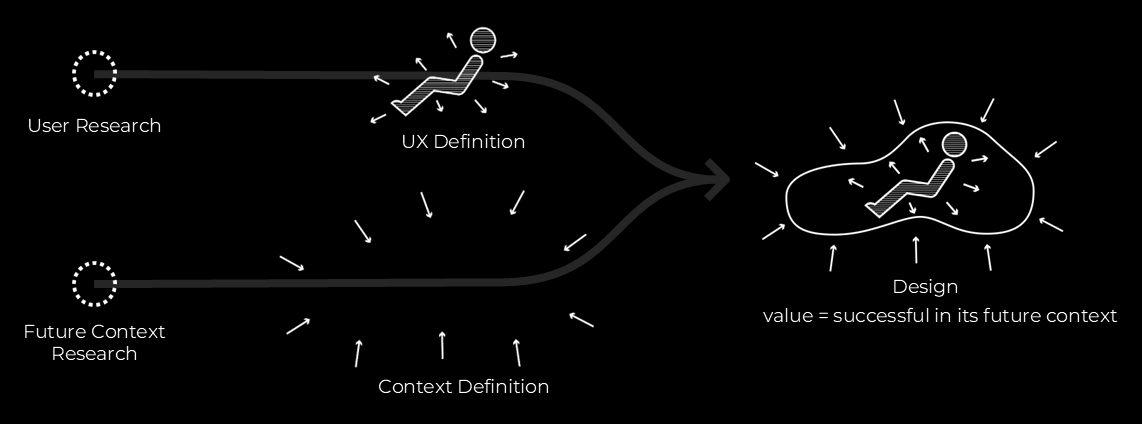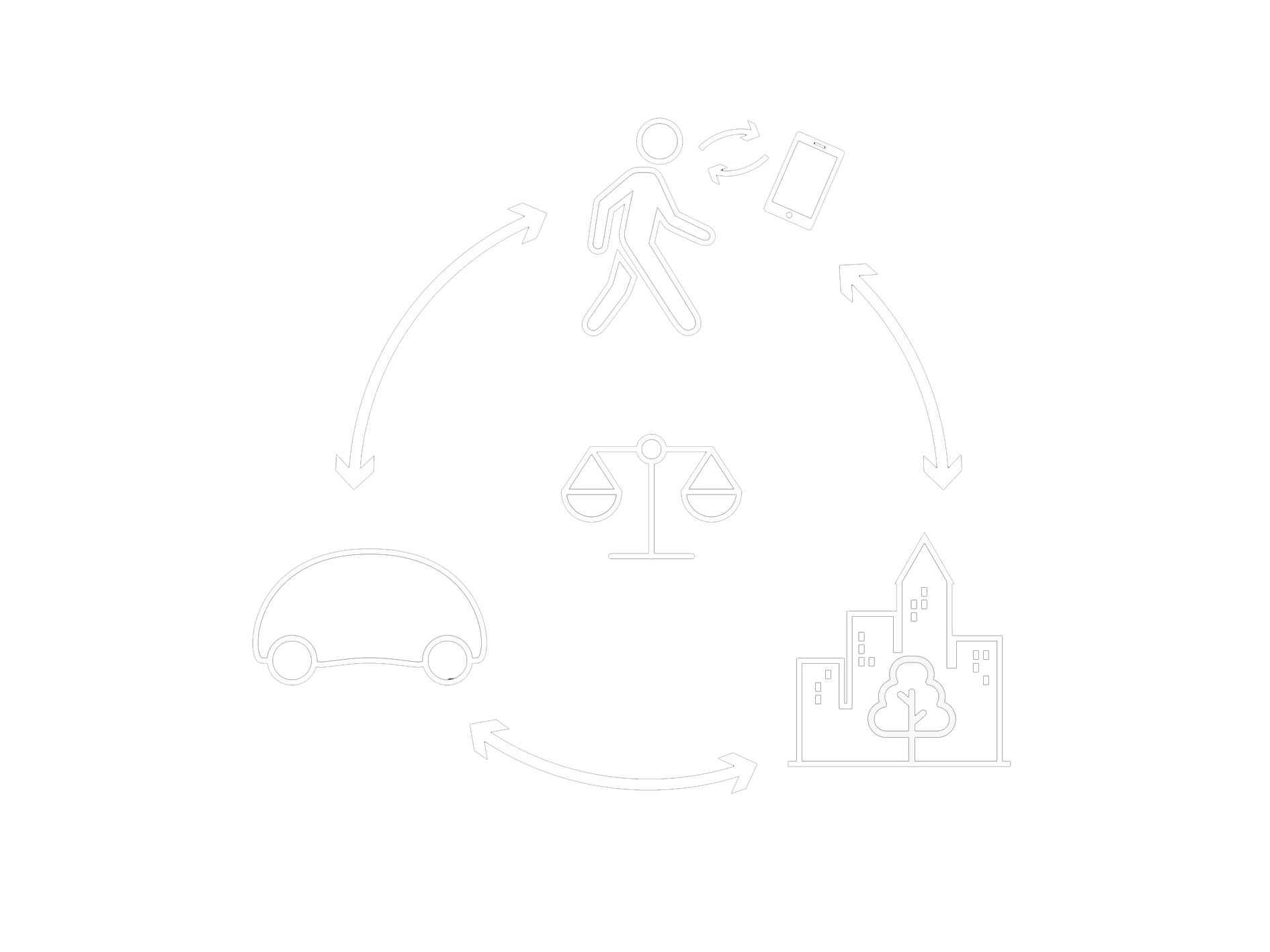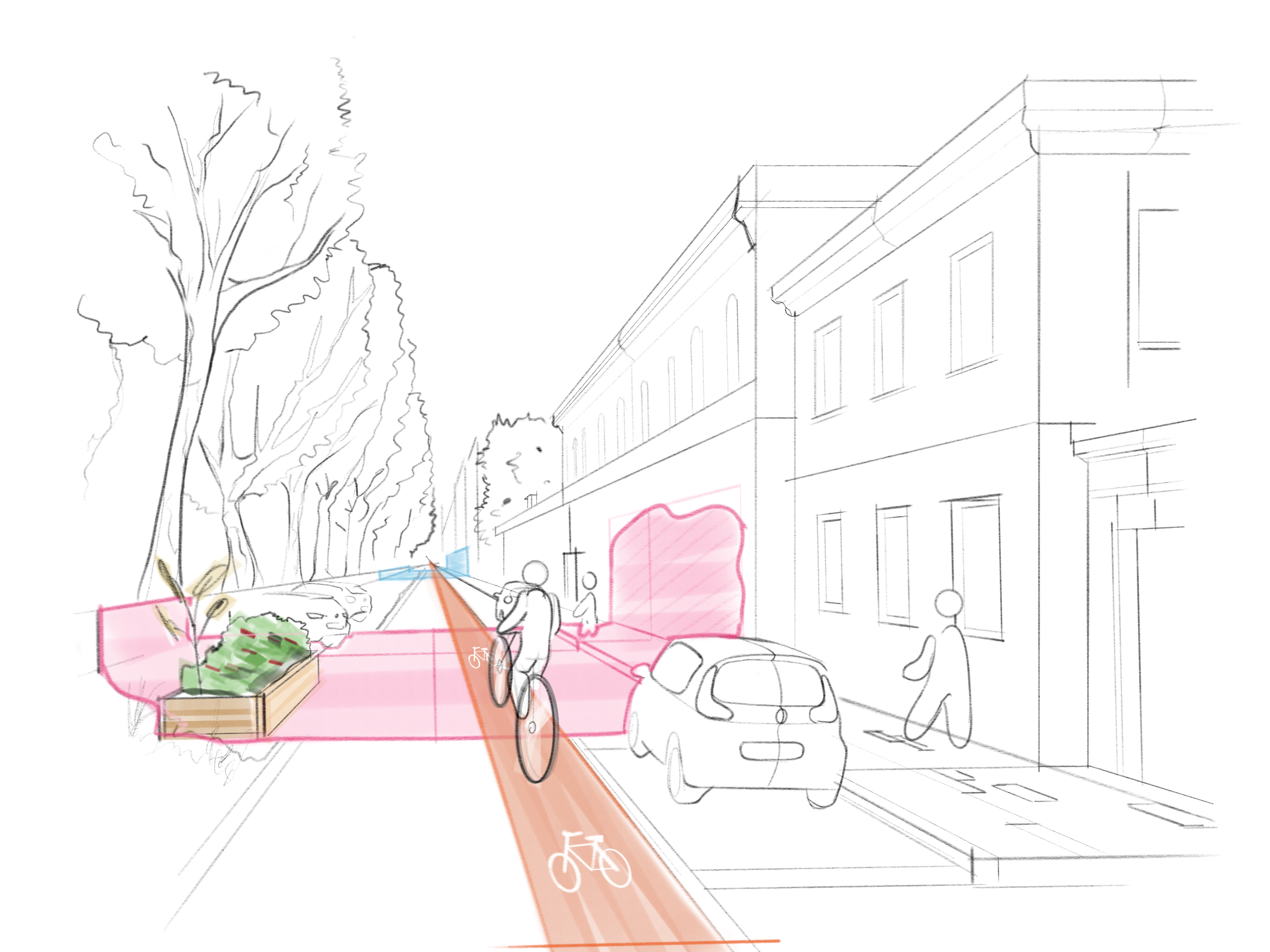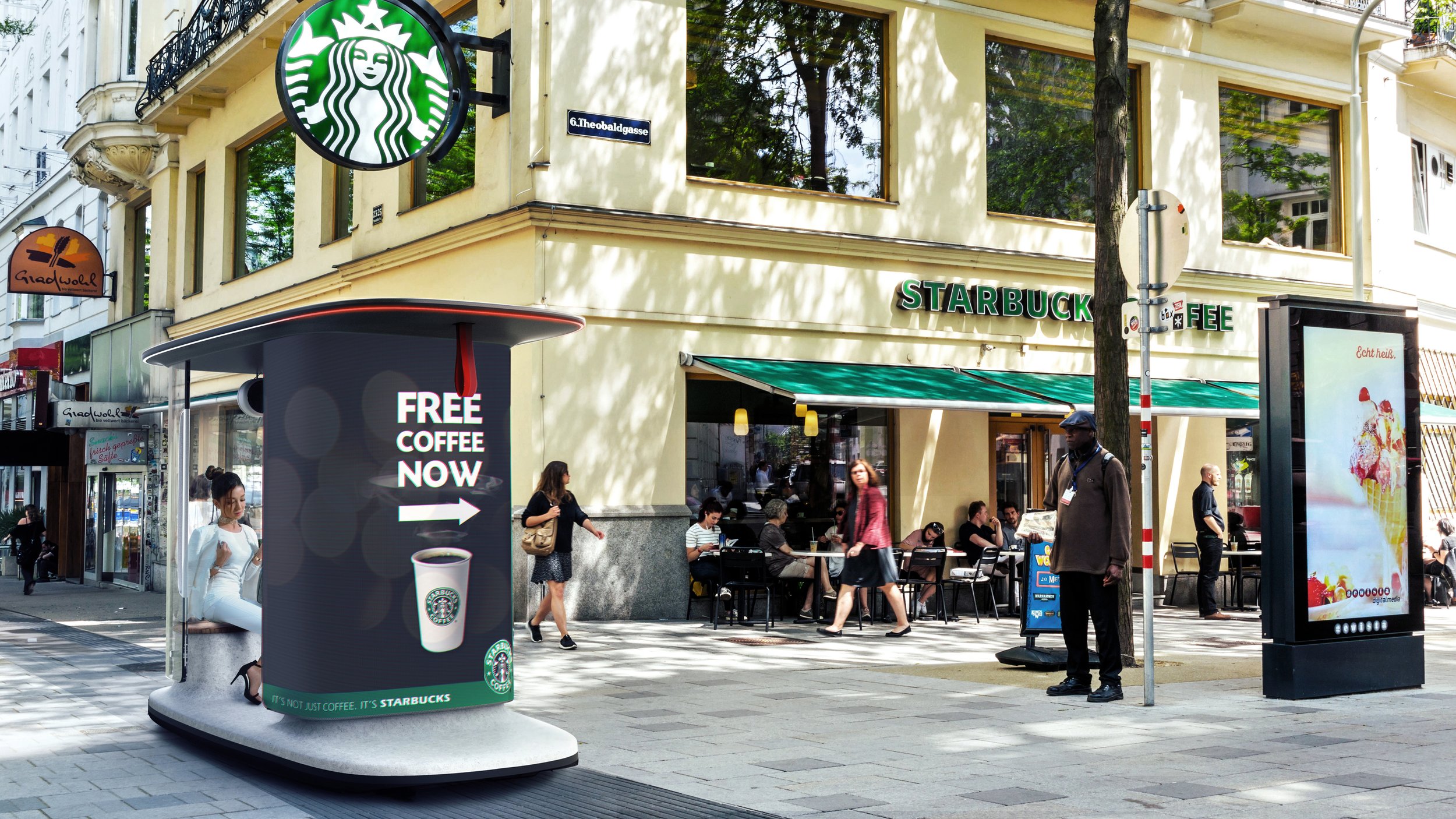
Mobility Design | Torino Controviali | 2025
Visions for Turin’s Controviali
This project is a testament to how mobility design can go beyond optimizing movement to reshaping urban life itself. By aligning human behavior, thoughtful design, and the built environment, we can craft mobility solutions that are not only practical but also aspirational — giving cities back to the people who make them thrive.
The start
Our user-driven and context-aware approach to mobility design was the starting point for a project initiated by Granstudio in collaboration with the Master in Transdisciplinary Design at IED in Turin. The project's key focus was to apply this design approach to explore future visions and possibilities for a typical urban phenomenon in Turin: the controviali or side roads.
These spaces run parallel to either side of the main road, basically tripling traffic surface. Facade to facade distances often measure over 50 meters, a luxury rarely seen in European cities. At present day, all the available space is dedicated to a car-centric monoculture.
Gradually, the city is stepping into the 21st century, stepping away from car dependency. The small historic center already received its beautiful pedestrian area with limited traffic access and cycling paths. The immediate area around that — the main chunk of the city, where people actually live, work, and dwell — still needs concrete vision. This project addresses that.
Our approach to Mobility Design
Mobility design is more than just improving vehicles, infrastructure, or services — it is about creating solutions that are both user-centered and deeply aware of their surroundings. While understanding user needs and envisioning an ideal future user experience (UX) are crucial steps in the design process, they alone are not sufficient.
Great solutions emerge when we consider not only individual desires but also the broader social, cultural, and spatial contexts in which movement takes place. By viewing mobility as an interconnected system — where users, means of transportation, and societal context form a unified whole — we uncover new opportunities and fresh ideas for urban transformation.
From user & context research to a great UX
The user research revealed a lack of safety, limited green spaces, and poor community interaction. Residents feel disconnected, with no shared areas to meet or engage. Parking conflicts, unclear rules, and high costs add to daily stress. Many want cleaner, safer streets, more diverse mobility options, and flexible spaces that adapt to their needs.
“ I don’t have a green space nearby to play with my dog/ kids. Mentally, I feel down due to the lack of green in my street.”
“ I’m not able to make a shift to electric vehicles, due to the condominium restrictions and the available public infrastructure.”
“ I can’t park nearby my condominium, and I have no safe space to store my bike or micro-mobility.”
“ I don’t know who the other residents are, what agreements they have, and I have no place to meet. I feel lonely.”
“Our lifestyles have increasingly permitted us to live secluded lives within our apartments. At the same time, poor urban design has amplified this isolation, as streets are primarily designed to cater to motorized mobility, leaving little room for community interaction or engagement at street level.”

Future visions in 4 interwoven parts
Regulations
Differentiate controviali from central lanes with distinct traffic rules. Restrict car access to only those with a destination there, lower speed limits, and increase central lane speeds to streamline traffic flow.Spaces
Implement a phased transformation of controviali, starting with small, community-led changes and evolving into a citywide network that redefines urban mobility and public space.Services
Introduce an app that empowers citizens in the transition, offering a platform for feedback, coordination, and shared mobility solutions — shifting from private car ownership to community-based fleet systems.Vehicles
Encourage new types of light, efficient vehicles tailored for controviali—ideal for local errands, short commutes, and sustainable urban travel, on top of the existing public transport offerings.
An app for citizen empowerment
Our service and collaborative platform which empowers residents to re-design, fund, and manage improvements for the controviale. It offers tools for participatory design, shared goods and temporary rentals.
By fostering a bottom-up approach, our solution creates vibrant streetscapes that strengthen community ties, support local economies, and empower residents to shape their environment. With funding options like micro-investments, commissions on trades, partnerships, and sponsorships, it ensures financial sustainability.
Transforming spaces into livable places
We want to empower residents of Turin to collaboratively transform traffic-dominated controviali and underutilized condominium spaces into vibrant, multifunctional areas that enhance quality of life through social, environmental, and economic improvements, where people can live, socialize, and thrive.
Subscription for a Better Neighbourhood
Scale: individual Residents
Consider a subscription service to maintain a clean neighbourhood while ensuring more safety for non-motorized travellers. The service ensures a well-kept, safe environment alongside some reserved parking, enhancing daily life for residents.
Condominium Collective
Scale: Condominium blocks
Collaborate with your condominium to identify specific needs and priorities. By pooling resources and sharing amenities, you can create a more efficient and enjoyable living environment that benefits all residents.
Develop with the Entire Street through DAO’s
Scale: entire Street
Collaborate with the entire street to decide on changes through a DAO, ensuring transparent, community-led decisions. Involve larger partners to bring in resources, capital, and expertise, creating impactful, long-lasting improvements that benefit everyone.
New vehicle types
Means of transport (vehicles) have long been a solution to be mobile within a given environment. However, over time our environments were being designed around vehicles rather than the other way around.
The solution is simple: if we want our cities to evolve, we must also rethink our vehicles. It’s about making it possible to use the right vehicle for the right purpose. European cities are compact, with short distances to cover, and as emissions and speed limits continue to decrease, cars—while still having a role in the broader mobility spectrum—will no longer be the natural choice for urban areas. Alongside public transport, a diverse range of smaller, lighter, and more enjoyable vehicles will gradually reshape our cities—transforming them from parking spaces into vibrant places to live, explore, and enjoy.
RELATED PROJECTS
-

Mobjects Slow Mobility
-

New Komma EV
-
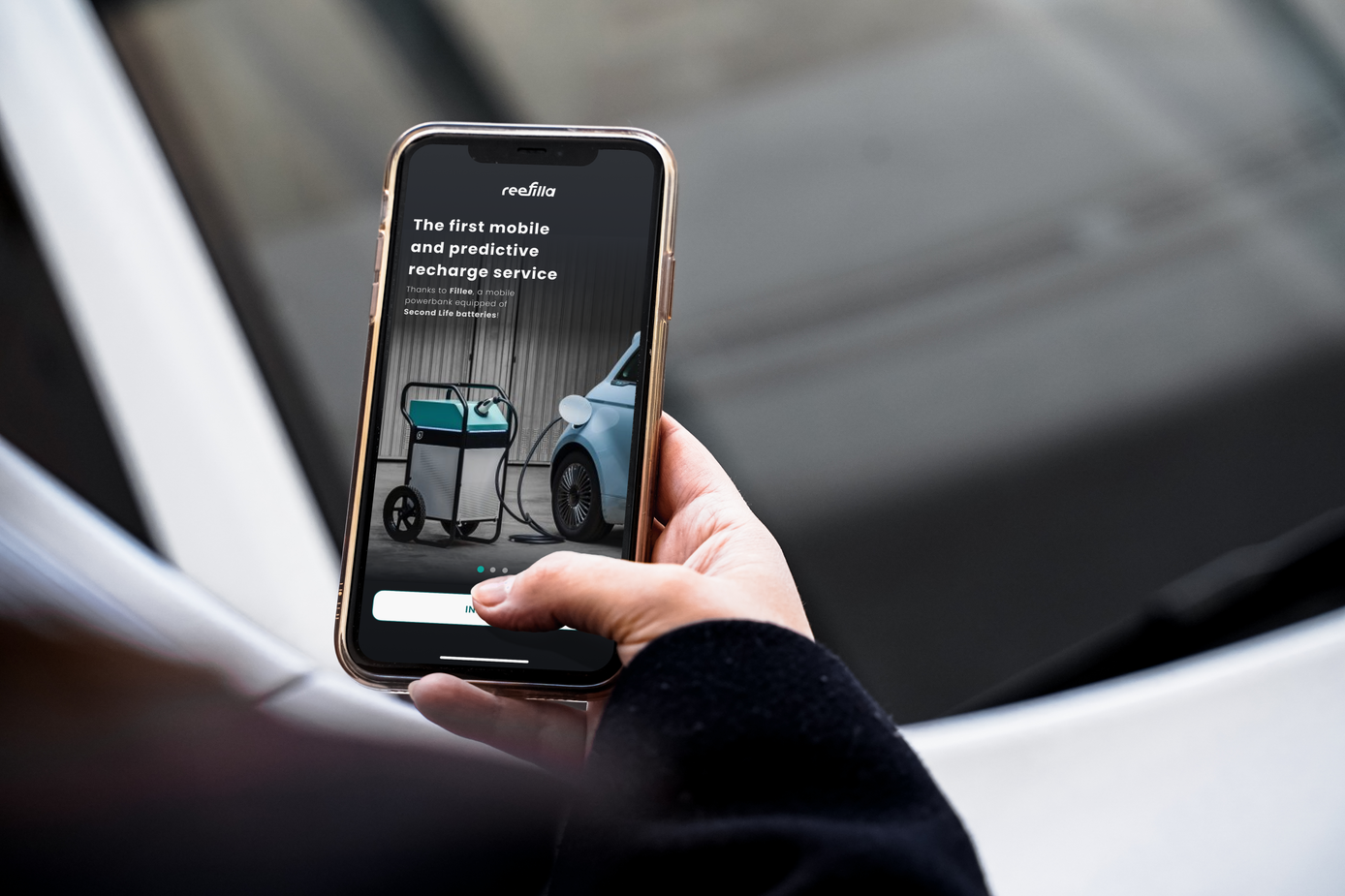
Reefilla Mobile Charging
Let’s move
Whether you have a specific need or just a curiosity to


